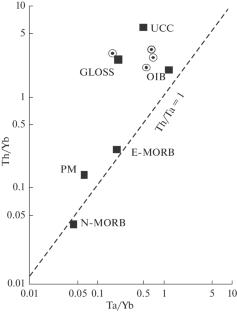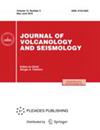亚美尼亚超高 K 火成岩形成的地球动力特性
IF 0.9
4区 地球科学
Q4 GEOCHEMISTRY & GEOPHYSICS
引用次数: 0
摘要
小高加索塞万-希拉克构造形成带的西北部含有可追溯到始新世晚期-渐新世早期(?)的超高 K 硅质火成岩,这些火成岩与钙碱性火山岩和闪长岩系列的高 K 火山岩相关联。在始新世-渐新世时期,塞万-希拉克地区是一个具有海西变质基底的海西岛弧。高 K 岩石,特别是超高 K 岩石的形成是由于地幔流体对大陆地壳的影响。本文章由计算机程序翻译,如有差异,请以英文原文为准。

Geodynamic Specifics in the Formation of Ultra-High-K Ignimbrites in Armenia
The northwestern part of the Sevan–Shirak structural formation zone of the Lesser Caucasus contains ultra-high-K siliceous ignimbrites dating back to the Late Eocene–start of Early Oligocene (?), which associate with high-K volcanics of the calc-alkaline and shoshonite series. During Eocene–Oligocene time the Sevan–Shirak zone was an ensialic island arc with a Hercynian metamorphic basement. The formation of high-K and especially ultra-high-K rocks was due to the effects of mantle fluids on the continental crust.
求助全文
通过发布文献求助,成功后即可免费获取论文全文。
去求助
来源期刊

Journal of Volcanology and Seismology
地学-地球化学与地球物理
CiteScore
1.50
自引率
28.60%
发文量
27
审稿时长
>12 weeks
期刊介绍:
Journal of Volcanology and Seismology publishes theoretical and experimental studies, communications, and reports on volcanic, seismic, geodynamic, and magmatic processes occurring in the areas of island arcs and other active regions of the Earth. In particular, the journal looks at present-day land and submarine volcanic activity; Neogene–Quaternary volcanism; mechanisms of plutonic activity; the geochemistry of volcanic and postvolcanic processes; geothermal systems in volcanic regions; and seismological monitoring. In addition, the journal surveys earthquakes, volcanic eruptions, and techniques for predicting them.
 求助内容:
求助内容: 应助结果提醒方式:
应助结果提醒方式:


